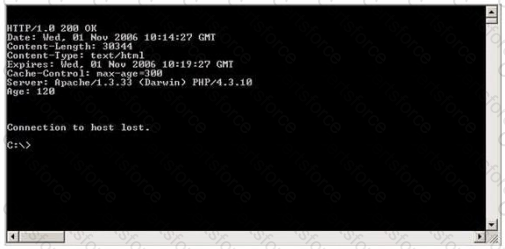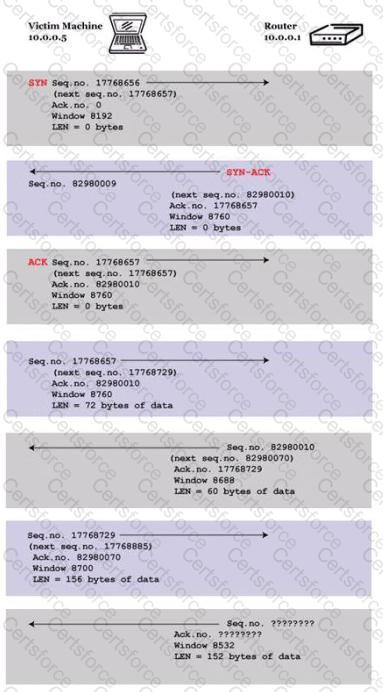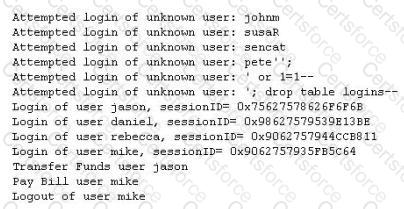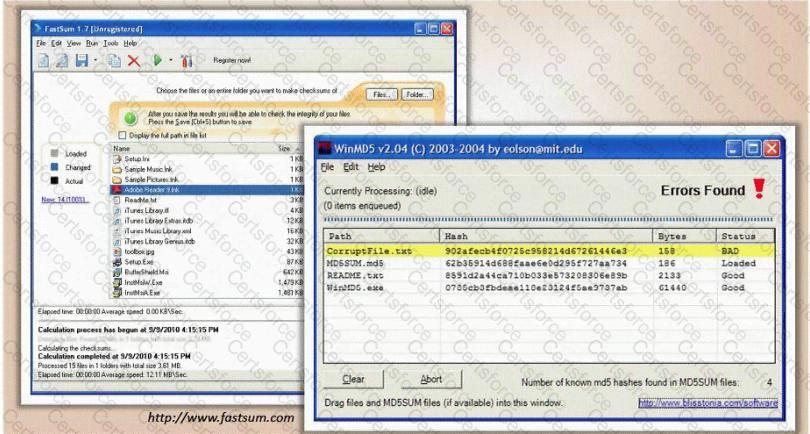Which of the following techniques can be used to mitigate the risk of an on-site attacker from connecting to an unused network port and gaining full access to the network? (Choose three.)
To see how some of the hosts on your network react, Winston sends out SYN packets to an IP range. A number of IPs respond with a SYN/ACK response. Before the connection is established he sends RST packets to those hosts to stop the session. Winston has done this to see how his intrusion detection system will log the traffic. What type of scan is Winston attempting here?
Low humidity in a data center can cause which of the following problems?
A hacker, who posed as a heating and air conditioning specialist, was able to install a sniffer program in a switched environment network. Which attack could the hacker use to sniff all of the packets in the network?
Blake is in charge of securing all 20 of his company's servers. He has enabled hardware and software firewalls, hardened the operating systems, and disabled all unnecessary services on all the servers. Unfortunately, there is proprietary AS400 emulation software that must run on one of the servers that requires the telnet service to function properly. Blake is especially concerned about this since telnet can be a very large security risk in an organization. Blake is concerned about how this particular server might look to an outside attacker so he decides to perform some footprinting, scanning, and penetration tests on the server. Blake telnets into the server using Port 80 and types in the following command:
HEAD / HTTP/1.0
After pressing enter twice, Blake gets the following results: What has Blake just accomplished?

In the software security development life cyle process, threat modeling occurs in which phase?
During a penetration test, the tester conducts an ACK scan using NMAP against the external interface of the DMZ firewall. NMAP reports that port 80 is unfiltered. Based on this response, which type of packet inspection is the firewall conducting?
Jake is a network administrator who needs to get reports from all the computer and network devices on his network. Jake wants to use SNMP but is afraid that won't be secure since passwords and messages are in clear text. How can Jake gather network information in a secure manner?
If an attacker's computer sends an IPID of 31400 to a zombie (Idle Scanning) computer on an open port, what will be the response?
Which type of scan measures a person's external features through a digital video camera?
Hayden is the network security administrator for her company, a large finance firm based in Miami. Hayden just returned from a security conference in Las Vegas where they talked about all kinds of old and new security threats; many of which she did not know of. Hayden is worried about the current security state of her company's network so she decides to start scanning the network from an external IP address. To see how some of the hosts on her network react, she sends out SYN packets to an IP range. A number of IPs responds with a SYN/ACK response. Before the connection is established she sends RST packets to those hosts to stop the session. She does this to see how her intrusion detection system will log the traffic. What type of scan is Hayden attempting here?
Which tool is used to automate SQL injections and exploit a database by forcing a given web application to connect to another database controlled by a hacker?
The SNMP Read-Only Community String is like a password. The string is sent along with each SNMP Get-Request and allows (or denies) access to a device. Most network vendors ship their equipment with a default password of "public". This is the so-called "default public community string". How would you keep intruders from getting sensitive information regarding the network devices using SNMP? (Select 2 answers)
You are trying to hijack a telnet session from a victim machine with IP address 10.0.0.5 to Cisco router at 10.0.0.1. You sniff the traffic and attempt to predict the sequence and acknowledgement numbers to successfully hijack the telnet session.
Here is the captured data in tcpdump.

What are the next sequence and acknowledgement numbers that the router will send to the victim machine?
Bank of Timbuktu is a medium-sized, regional financial institution in Timbuktu. The bank has deployed a new Internet-accessible Web application recently. Customers can access their account balances, transfer money between accounts, pay bills and conduct online financial business using a Web browser.
John Stevens is in charge of information security at Bank of Timbuktu. After one month in production, several customers have complained about the Internet enabled banking application. Strangely, the account balances of many of the bank's customers had been changed! However, money hasn't been removed from the bank; instead, money was transferred between accounts. Given this attack profile, John Stevens reviewed the Web application's logs and found the following entries:

What kind of attack did the Hacker attempt to carry out at the bank?
What is the main disadvantage of the scripting languages as opposed to compiled programming languages?
Jeremy is web security consultant for Information Securitas. Jeremy has just been hired to perform contract work for a large state agency in Michigan. Jeremy's first task is to scan all the company's external websites. Jeremy comes upon a login page which appears to allow employees access to sensitive areas on the website. James types in the following statement in the username field:
SELECT * from Users where username='admin' ?AND password='' AND email like '%@testers.com%'
What will the SQL statement accomplish?
You generate MD5 128-bit hash on all files and folders on your computer to keep a baseline check for security reasons?

What is the length of the MD5 hash?
When does the Payment Card Industry Data Security Standard (PCI-DSS) require organizations to perform external and internal penetration testing?
After a client sends a connection request (SYN) packet to the server, the server will respond (SYN-ACK) with a sequence number of its choosing, which then must be acknowledged (ACK) by the client. This sequence number is predictable; the attack connects to a service first with its own IP address, records the sequence number chosen, and then opens a second connection from a forged IP address. The attack doesn't see the SYN-ACK (or any other packet) from the server, but can guess the correct responses. If the source IP address is used for authentication, then the attacker can use the one-sided communication to break into the server. What attacks can you successfully launch against a server using the above technique?